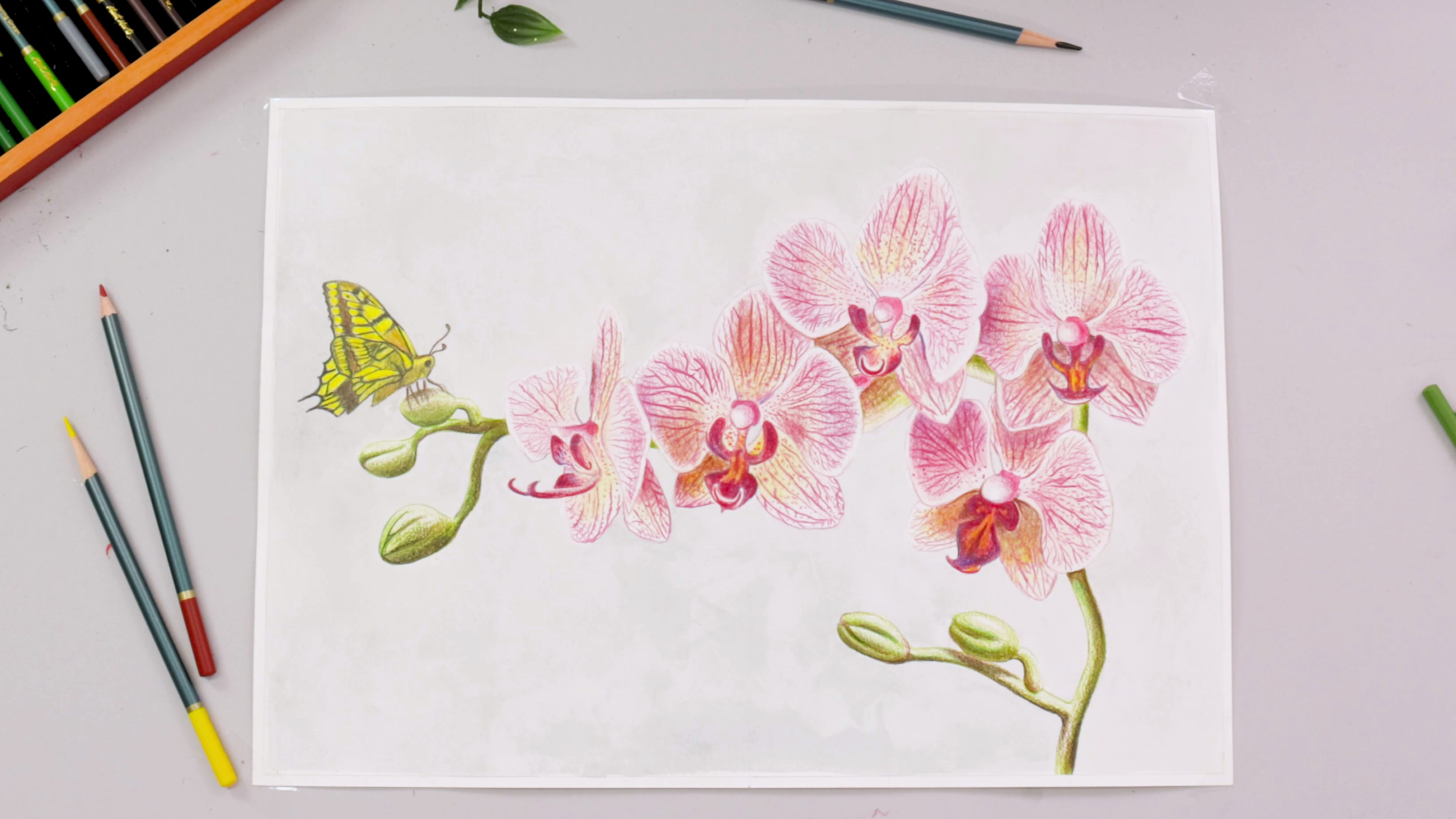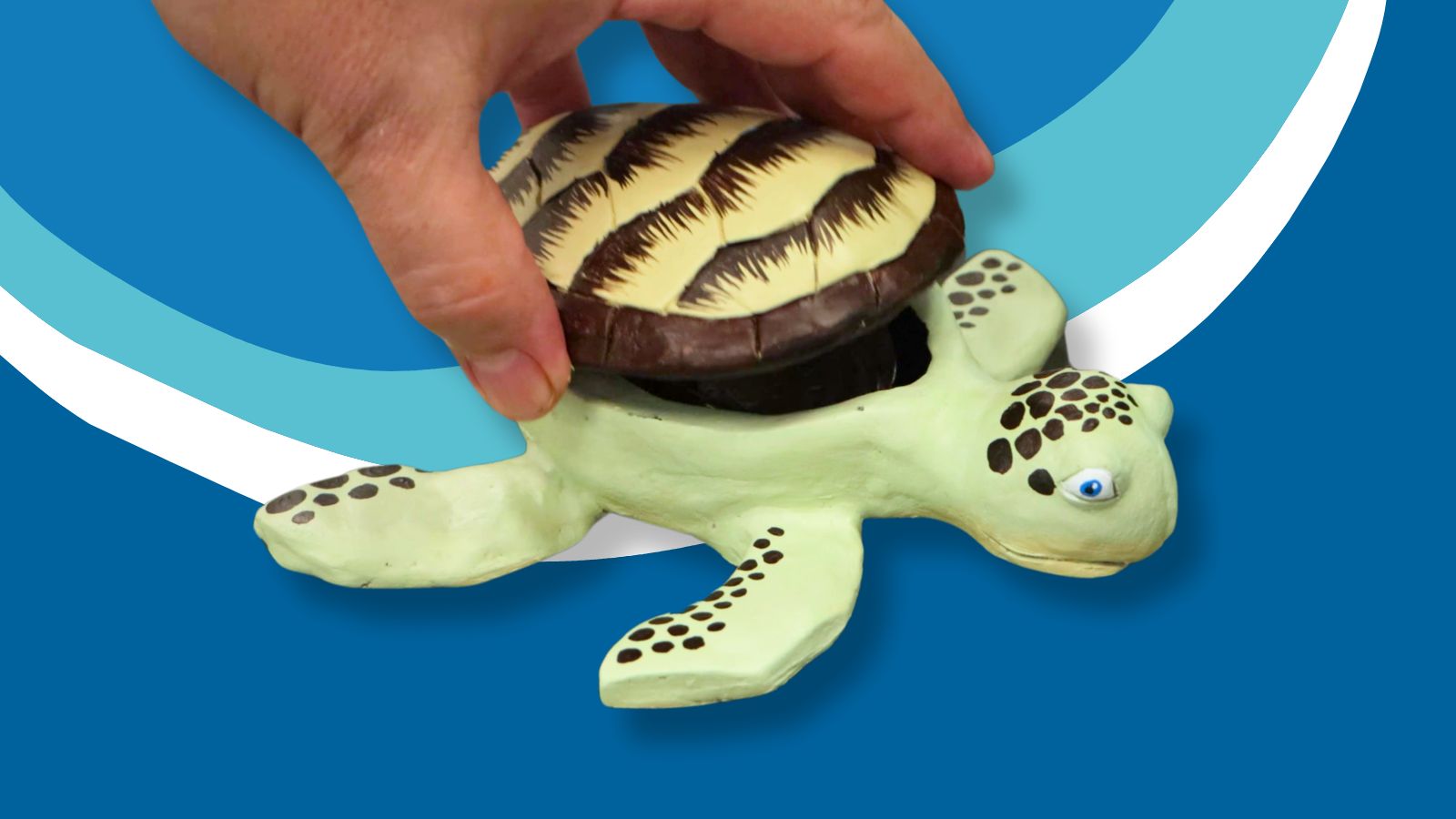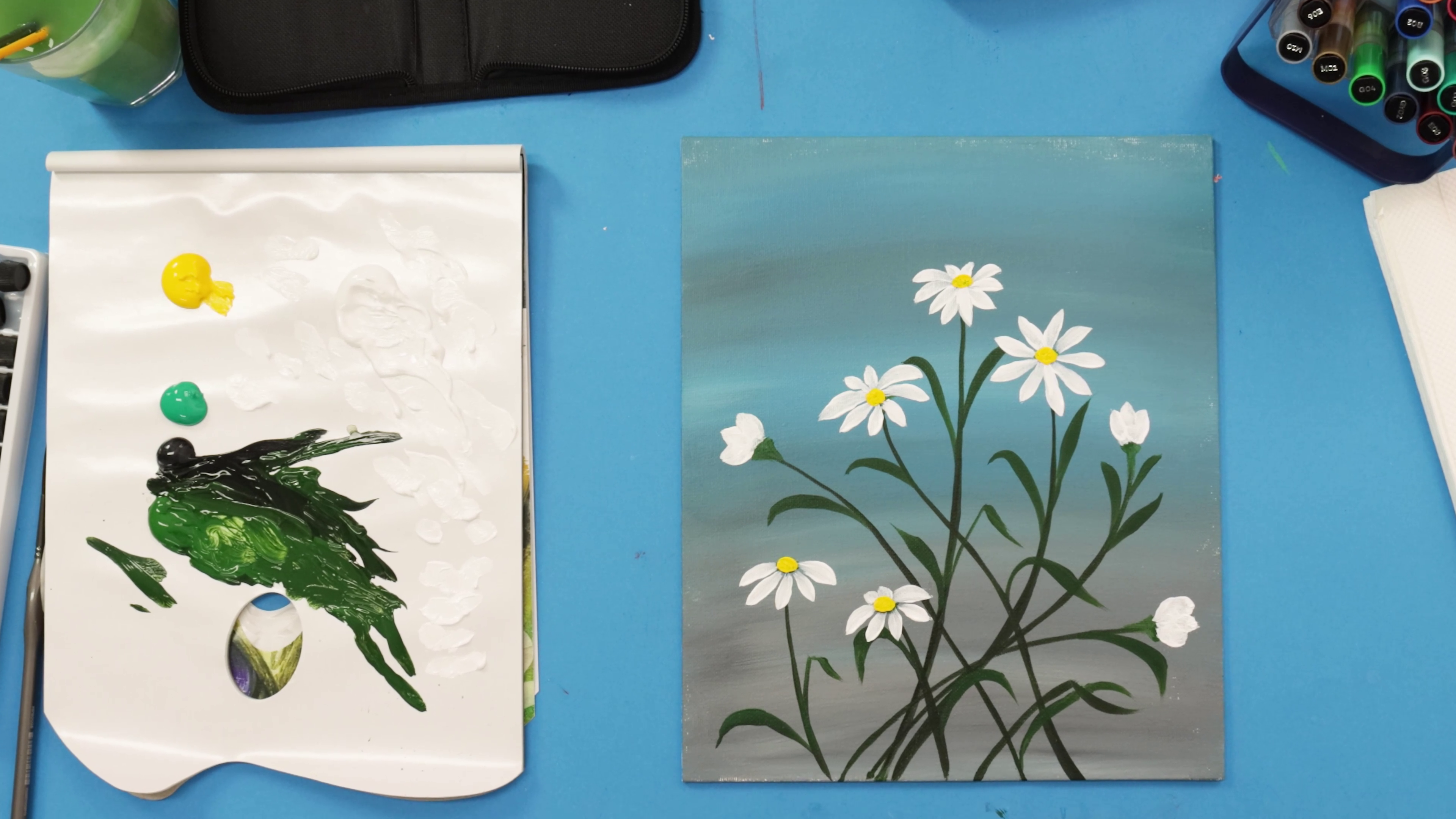How to paint a frog in acrylic
Leap into a fun art project and give this frog painting a go. In this video we step you through how to transfer your image onto a canvas and bring your frog to life with a range of painting techniques.
Step 1. Painting the ground.
The first step is to paint the canvas with a deep green created from Hookers Green, Mid Green White and a touch of Crimson Red. I apply the paint with a 75mm Abstract Expression Brush. I work across diagonally and mix more Hookers Green into the coat as I move down the canvas. Let this coat dry.
Step 2. Drawing up the frog.
Refer to the image on page 8 and using a Mont Marte Water Based Brush marker, draw up the frog. Take your time and ensure that you don’t commence with the painting until you are happy with the drawing. A black brush marker is the best way to mark up a design on a dark ground. It also has merit because any line-work can be easily wiped off with a damp cloth if it has been put into the wrong position.
Step 3. Painting the background.
The background of our painting is in the jungle and there is quite a lot of information that needs to be put in. Refer to the image at the bottom of the page and the image on page 9 for reference on the general shape and position of each plant. It is a good idea to watch the accompanying video to familiarise how to do this step. The colour recipes are outlined below; Plant 1. Mid Green, Phthalo Blue and Titanium. Plant 2. Mid Green, Cadmium Yellow and a touch of Yellow Ochre. Plant 3. Mid Green, Hookers Green and Paynes Grey. Plant 4. Mid Green and Hookers Green with a touch of Yellow Ochre. Plant 5. Mix 1. Plant 6. (bamboo) Mix 3. Plant 7. Leaf 1, Sap Green and Burnt Umber. Leaf 2, Sap Green and Hookers Green. Leaf 3, Hookers and Paynes Grey. Plant 8. (Vines) Painted with Paynes Grey then painted with Burnt Umber with a touch of Titanium White. Once the Vegetation is in, create a mix from 1 part Cobalt Blue, 1 part Titanium White, 1 part Retarder Gel and 1 part Acrylic Matt Medium. Paint this into the negative space around the vegetation. Work diagonally across the canvas and apply less paint so that by the time the centre of the canvas is reached the paint fades to nothing. Create a mix from I part Cadmium Yellow, 1 part Titanium White, 1 part Gel Medium and 1 part Acrylic Matt Medium. Follow the same process as with the cobalt mix but from the bottom of the canvas up the canvas to the Cobalt Blue.
Step 4 . Undercoating the frog.
The background is very dark and much of the frog features quite light tones, so a Titanium White needs to be laid into these areas. First we lay some White across the lip area, around the eye and the markings on the side of the head. The arms and legs have markings on them too and as they are quite light I add the Titanium White thickly. The underside of the frog including the arms and legs have yellow to orange tones and has ripples, bulges and folds of skin that need to be suggested. To achieve this effect we build up tone by dry brushing on Titanium White. The process is to build up the areas that need to be in highlight with a fair amount of White and leave the areas intended to be in shadow free of colour. Use a filbert brush to lay on the colour. Don’t charge the brush with too much paint, instead, build up the tone slowly. Refer to the image on page 9 to help with this tonal modelling. Once the frog has been tonally rendered dip a stiff bristled brush into some Titanium White and flick paint on to the top side of the frog and the arms.
Step 5 . Glazing the frog.
The tonal modelling has been created with White so now we need to build up the colour with glazes. So each colour in this step should be mixed with Acrylic Matt Medium. For this stage follow the steps laid out below; 1) Glaze the nose, around the eye and along all of the White that borders the Green using Phthalo Blue. Lay this tone darker into the arms. 2) Glaze in the top of the frog and the top of the arms and legs with Mid Green. 3) Glaze the entire underside of the frog, including under the legs and arms with Lemon Yellow mixed with White. 4) Create a mix of Cadmium Yellow with a touch of Orange and glaze this tone into the underside of the frog but leave any areas intended to be in highlight free of this colour. 5) Next Glaze an Orange into the underside of the frog, concentrating this colour into the areas of shadow. 6) In the final stage use the colours mixed in the palette to lighten or darken certain areas until the frog looks correct. Refer to the last image for guidance. 5
Step 6. Painting the branch.
Use a 25mm abstract expression brush for this stage. Mix Retarder gel into Van Dyke Brown and Paint the branch in . While this is still wet, blend Satin Series Burnt Umber into the coat leaving the top and bottom Van Dyke Brown. Blend Titanium White into the Burnt Umber with long strokes into the centre of the branch. Block in the large areas first and then cut in around the frogs hands. 7. Painting the eye The eye is created in 7 stages. Allow the paint to dry between each step outlined below: 1) Create a thin layer of Titanium White over the iris. 2) Lay a thin layer of Crimson Red over the iris. 3) Lay Lemon Yellow on to the right hand side of the iris. 4) Glaze a mix of Purple/White over the iris. 5) Paint a fine line of Titanium White onto the edge of the iris where it meets the pupil. 6) Paint Black into the pupil. 7) Add a spot of Titanium White. 8 8. Detailing. The frog is essentially finished and in this stage we need to add the details. Follow the below steps. 1) Dry brush a block of highlight onto the frog’s snout between the eye and nostril. 2) Create an undulating line at the top of the frog’s bottom lip with Burnt Umber. 3) Add Titanium White highlight lines and dots with a fine brush over the frog. Refer to last image for reference.
HINT: Dry Brushing is a technique where the brush is charged with a small a mount of paint and applied to the surface. This delivers a broken layer of paint where the ground can be seen beneath this paint application.
Material List
- Colouring Brush Markers Signature 12pc
- Abstract Expression Brush - 75mm
- Abstract Expression Brush Premium - 25mm
- Artist Brush Taklon Filbert Premium 16
- Artist Brush Premium Taklon Filbert 10
- Plastic Brush Washer Signature
- Acrylic Medium Premium - Matte 135ml (4.6oz)
- Taklon Brush Set in Wallet Signature 11pce - Acrylic
- Double Thick Canvas Premium 91.4 x 121.8cm (36 x 48in)
- Palette Knife Signature No.4
- Acrylic Retarder Premium 75ml (2.5 us fl.oz)





































